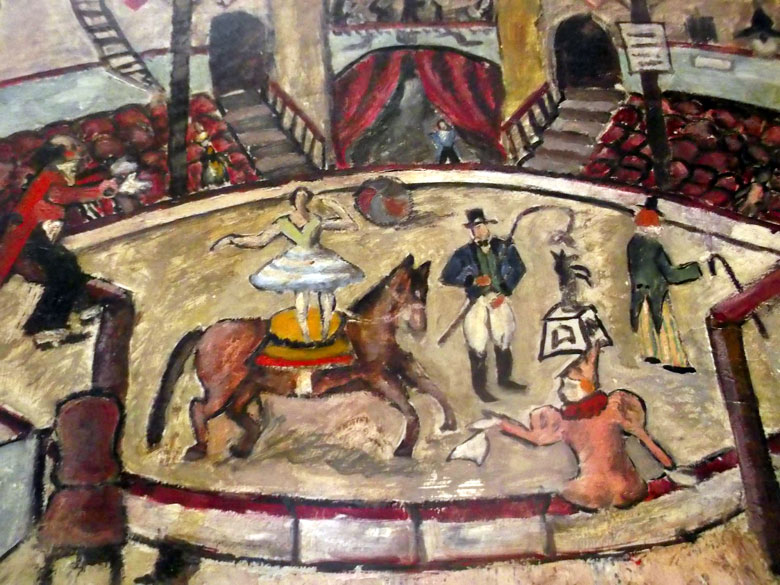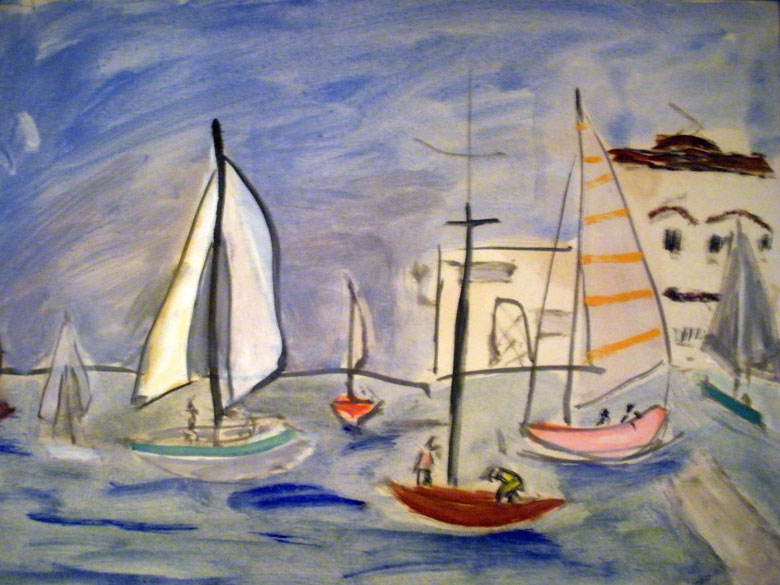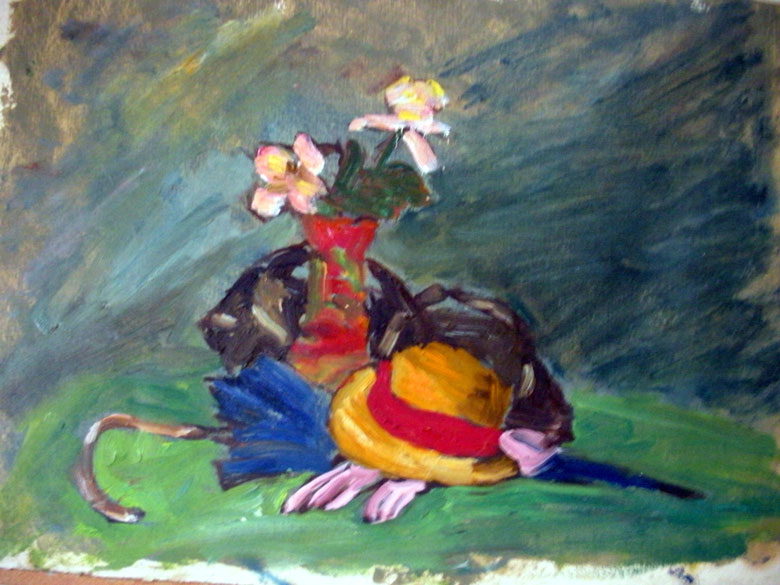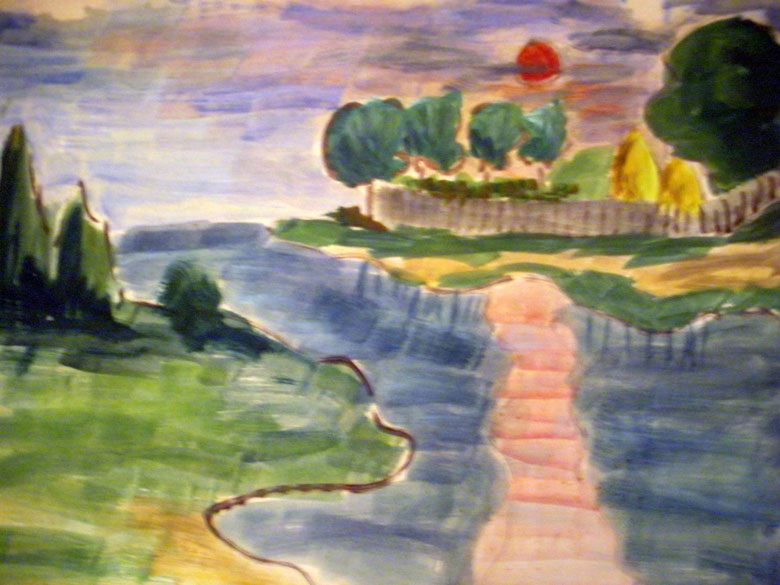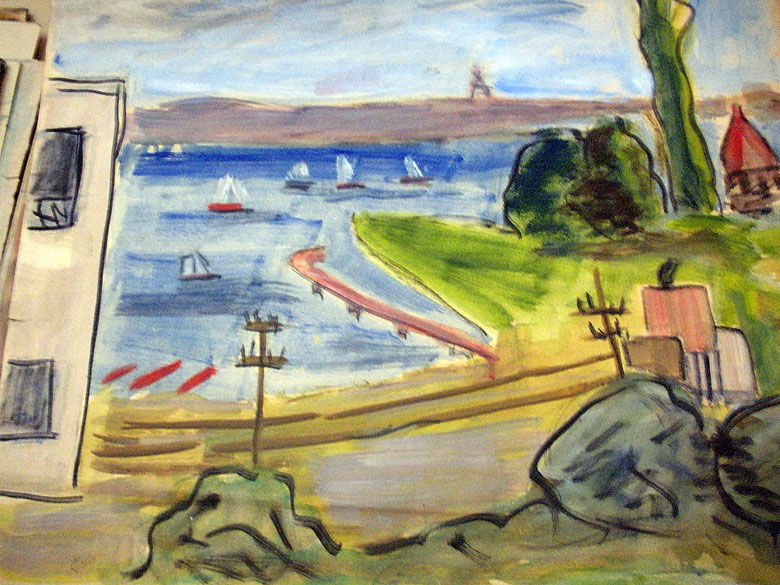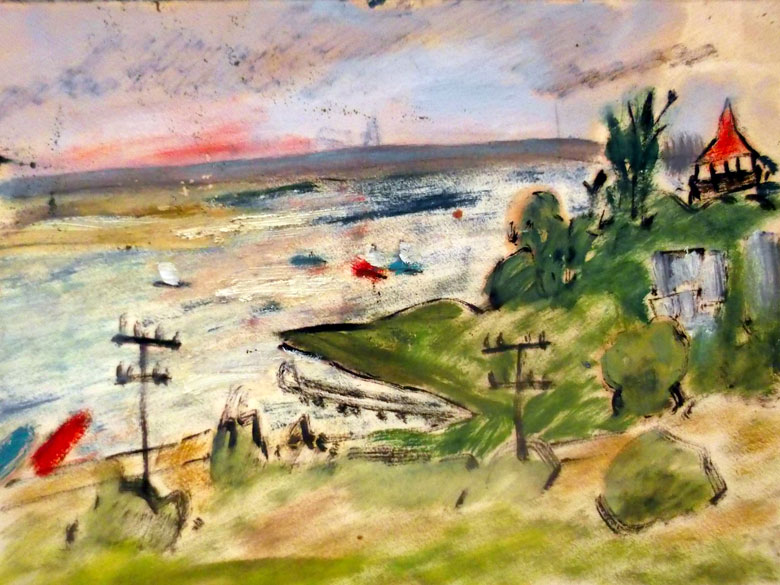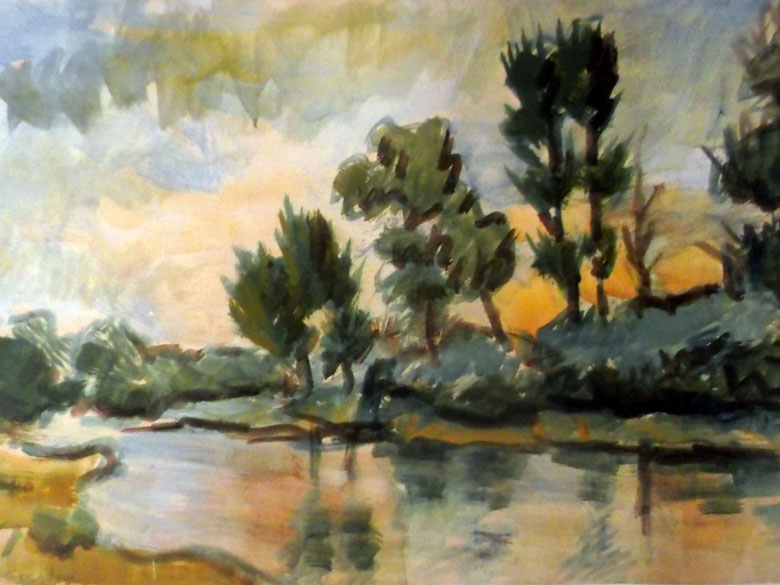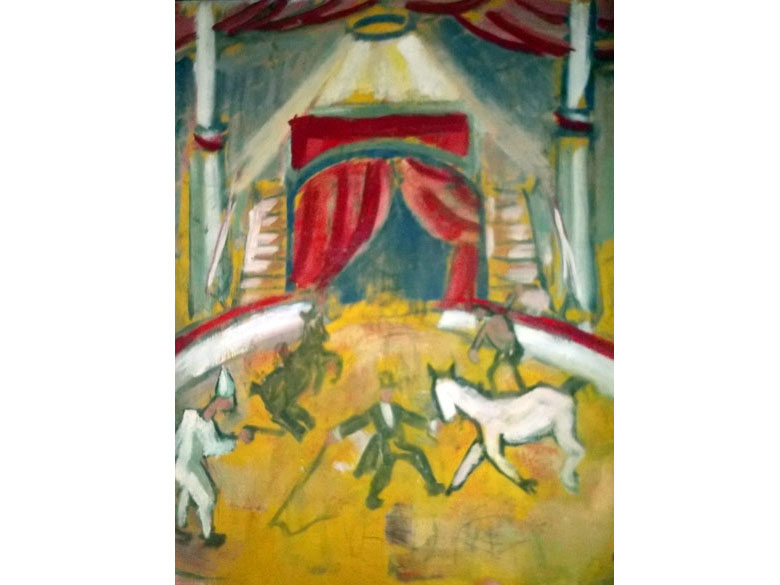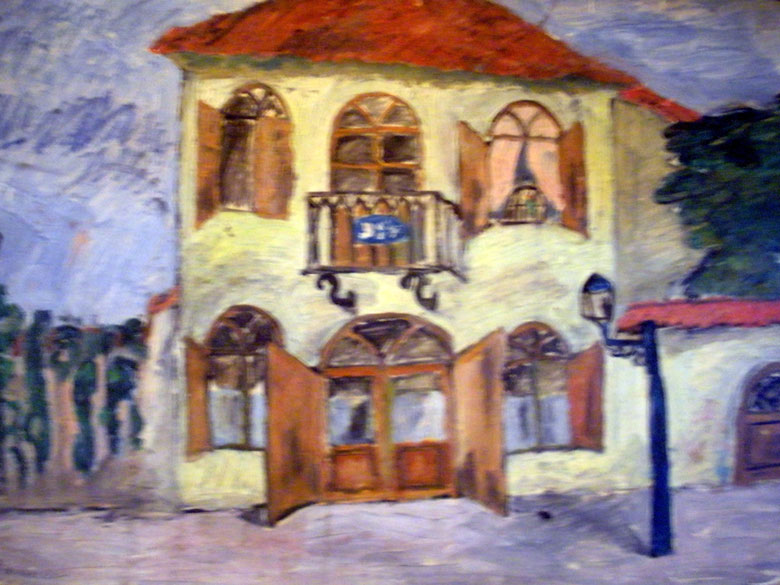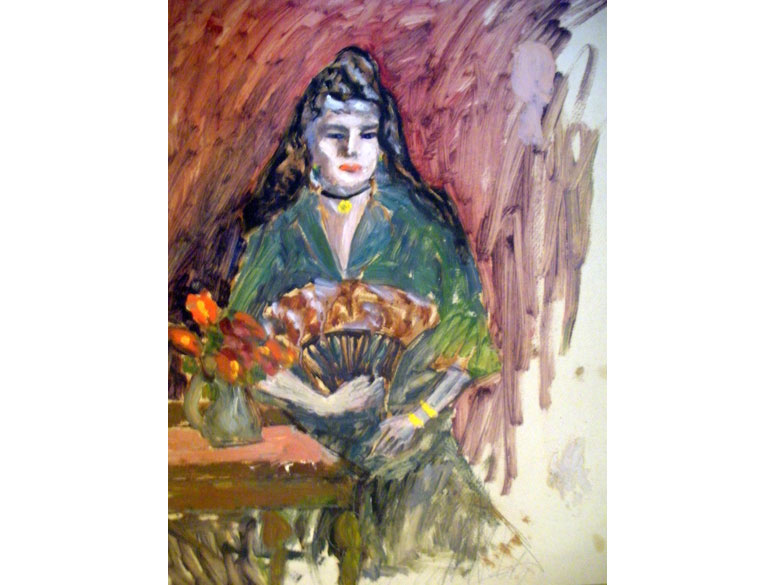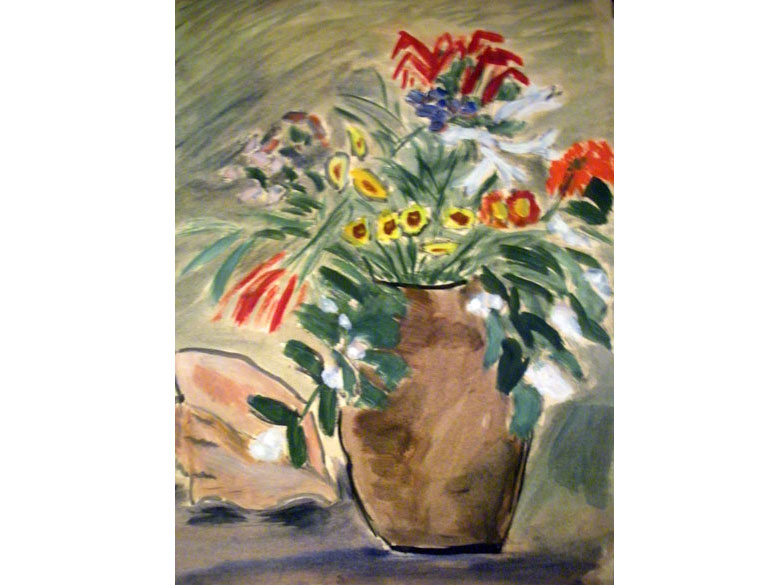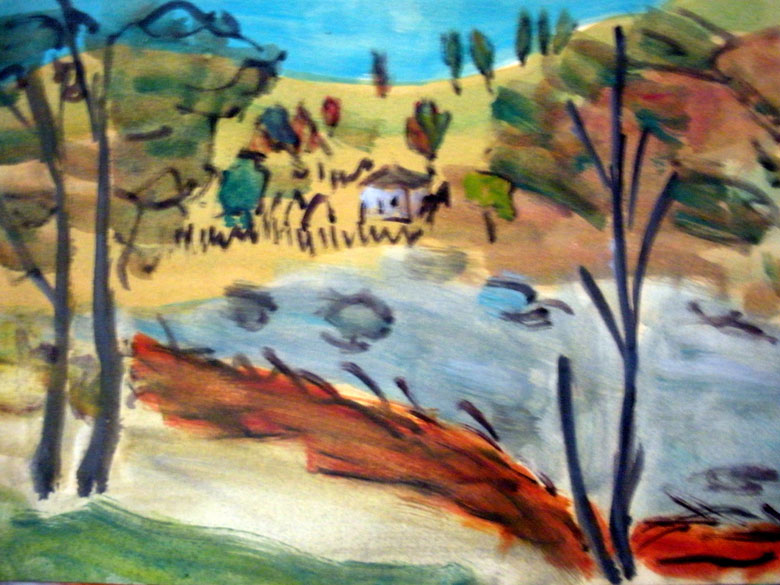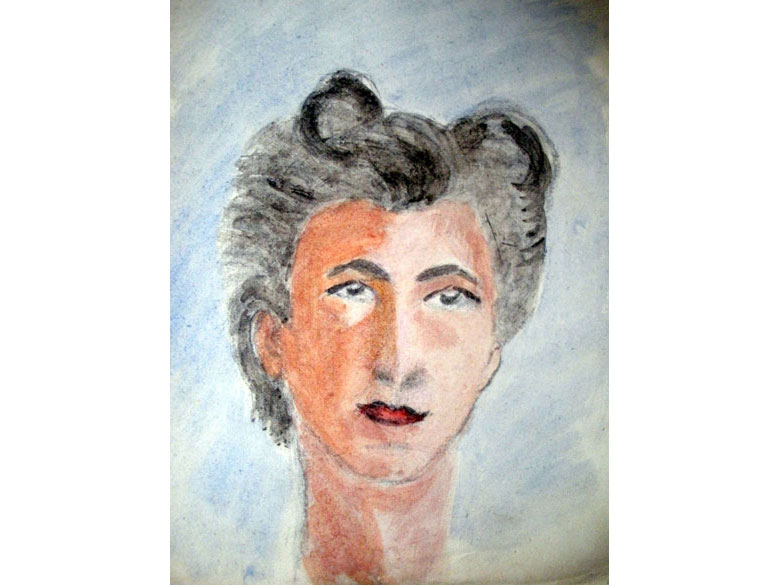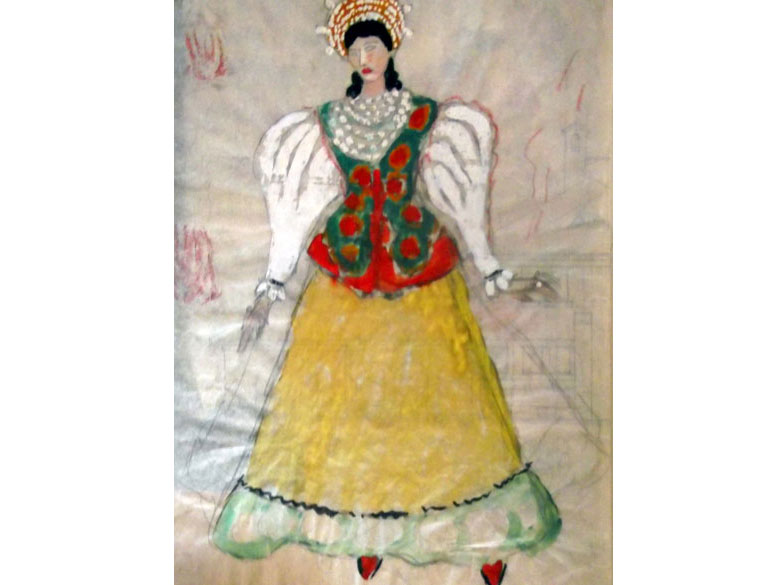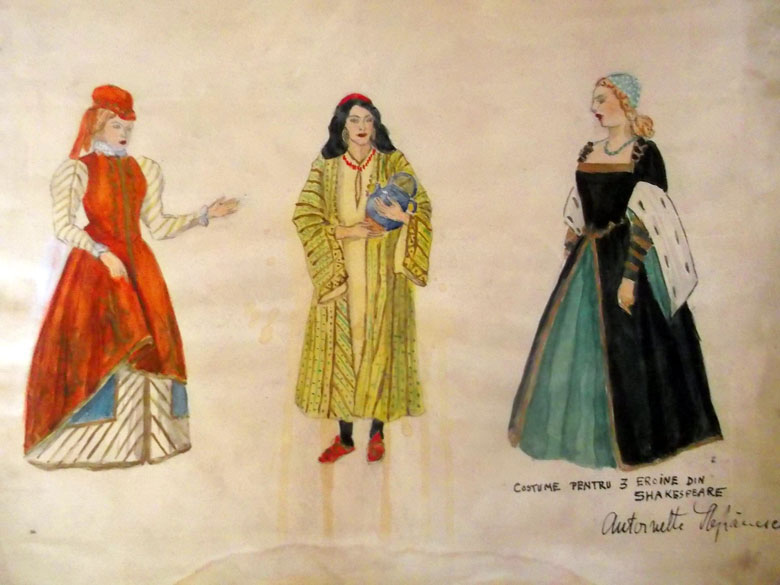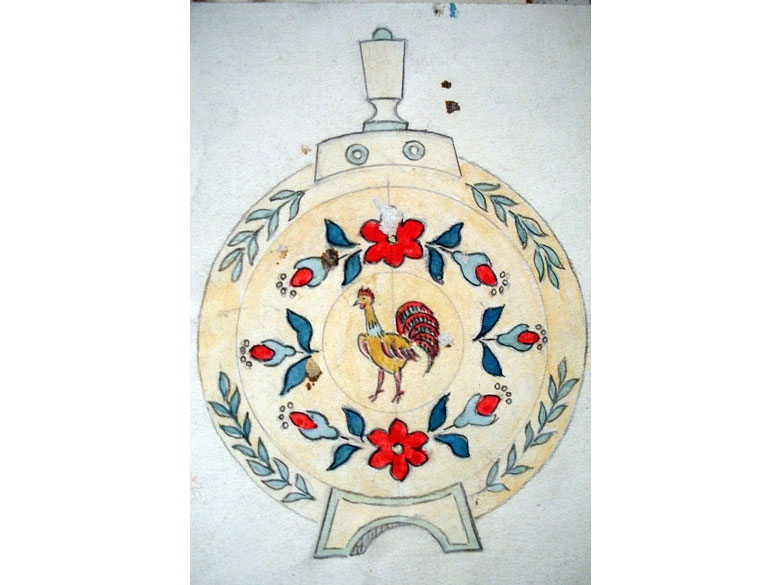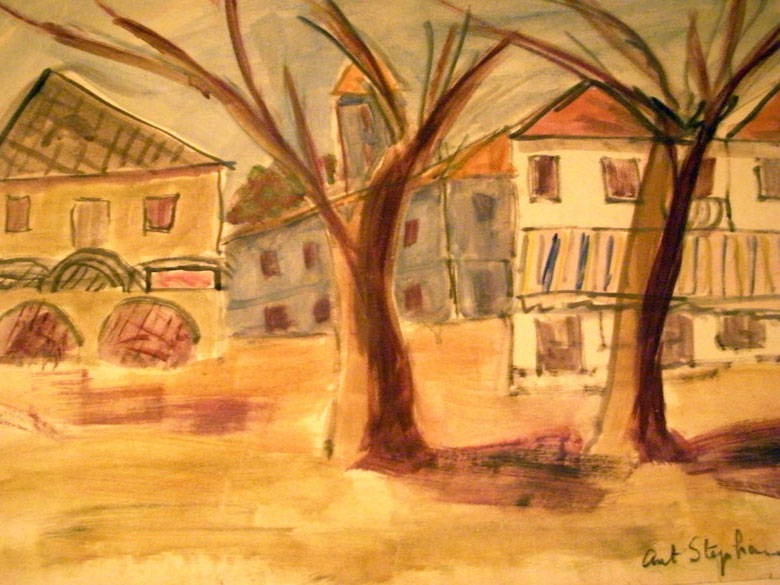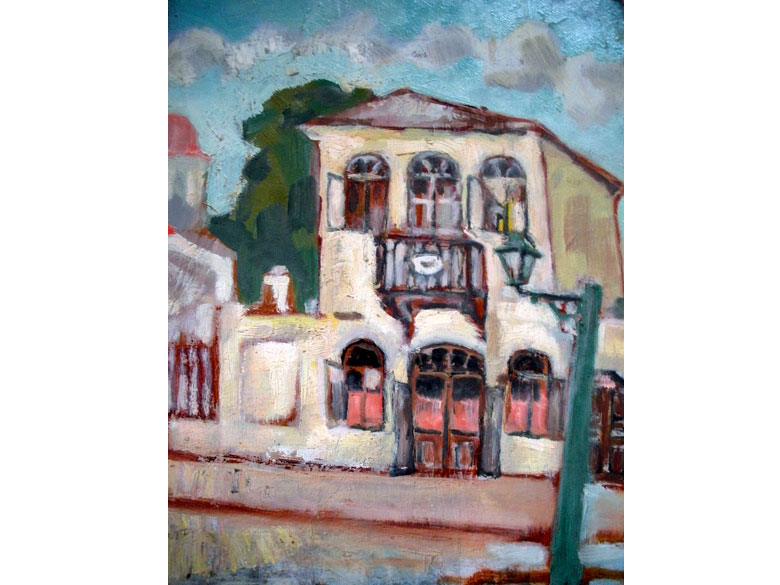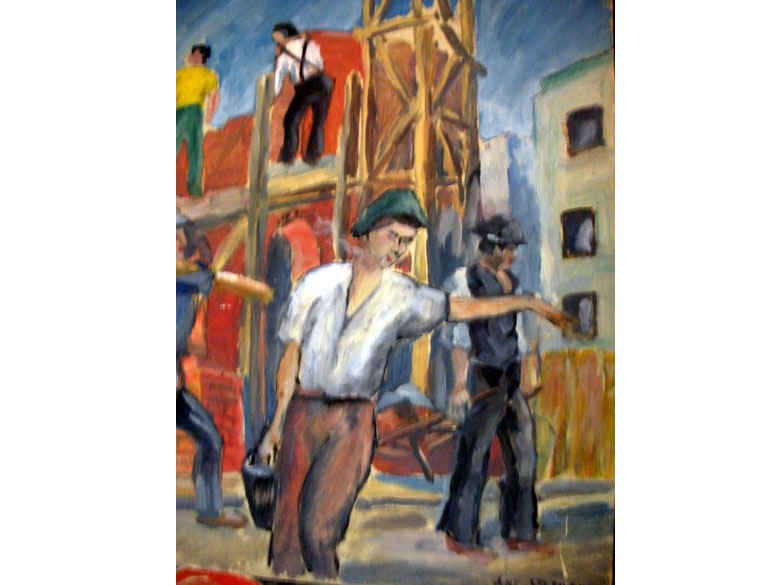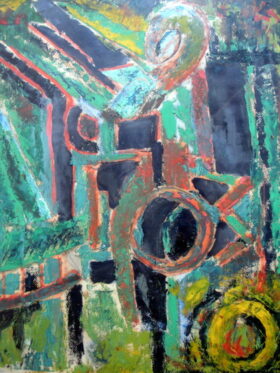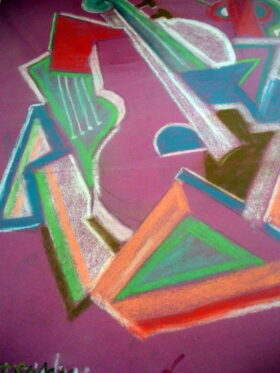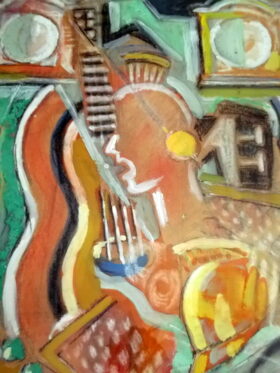The painter Antoinette Stephanescu had a very rich activity:
- Between 1930 and 1940 she exhibited at various official lounges, in 1937 she had her first personal exhibition in the Mozart hall. In 1939 she had a personal exhibition on her own workshop.
- Between 1940 and 1944 she was not allowed to manifest .
After 1944 she had the following artistic manifestations:
- In 1945 she exhibited at the show “Flacăra” the works registered at no. 253. Also in 1945 she exhibited at the Drawing and Engraving salon the Exhibitor’s book no. 204.
- In 1946 she had four artistic works at the Woman’s exhibition.
- In 1947 she had three artistic works at the Woman’s exhibition.
- In 1948 she exhibited at the Romanian Atheneum with the woman’s group formed by Mariana Pătraşcu, Ana Jiquidi, Rita Stork, Ecaterina Cristescu-Delghioz, Vintilescu etc…
- In 1949 the Ministry of Arts gave her to execute the artistic mannequins for the popular art exhibition in Moscow.
- In 1950, again the Ministry of Arts gave her to perform the artistic dummies of the People’s Art Museum, dummies that are still used today.
- Betwen the years 1951 – 1952 she worked at the Bălcescu Collective, constituted by authentic act no. 3420 of July 31, 1951 and authorized by the Plastic Union of Artists with no. 1545 of 30.VII.1951. The group was formed by Jean Steriadi, Camil Ressu, professor Mützner, Rodica Maniu, Gabriel Stephanescu-Arephy, Schweitzer-Cumpăna and Antoinette Stephănescu. Also in 1952 she was on Art Committee and she made some works of art for Helsinki.
- In 1953 she worked for the Festival with several contracts.
- Between 1953 – 1955 she worked for the following institutions with contracts, approved by the Plastic Fund and evaluated and paid through the Plastic Fund: for the Pioneer Houses of the Popular Council of Bucharest Region; for the Pioneer Houses of the Popular Council of Craiova Region; for the Pioneer Houses of the Popular Council of Constanta Region etc.
- In 1955 she was removed from the U.A.P. on the grounds that some works performed were brought to her by the purchaser. Shortly after she was removed from the Union, the purchasers were officially admitted to the Plastic Fund.
- On February 1, 1955, when she was removed from the Union of Plastic Artists, the Plastic Fund did not have members separated from the U.A.P. Once you lost your membership in the U.A.P. you also lost the membership of the Plastic Fund. Because of this measure, the members excluded from the U.A.P. they retained their status as members of the Plastic Fund, enjoying all the rights that flowed from this quality.
- In 1957, at the age of 55, Antoinette Stephănescu asked U.A.P. her retirement, but she was told that since she was not anymore a member of the Plastic Fund at that time, she cannot have the retirement allowance, even though she had paid all her contributions, both to the U.A.P. and the Plastic Fund. Speaking to the Ministry of Health and Social Welfare for her retirement, she was informed that since the social contribution from the Fine Arts Syndicate was not paid to the Ministry, it was the case with the most of the artists’, they have no obligations towards plastic artists.
You can see here some photo galleries with paintings made by Antoinette Stephănescu:




